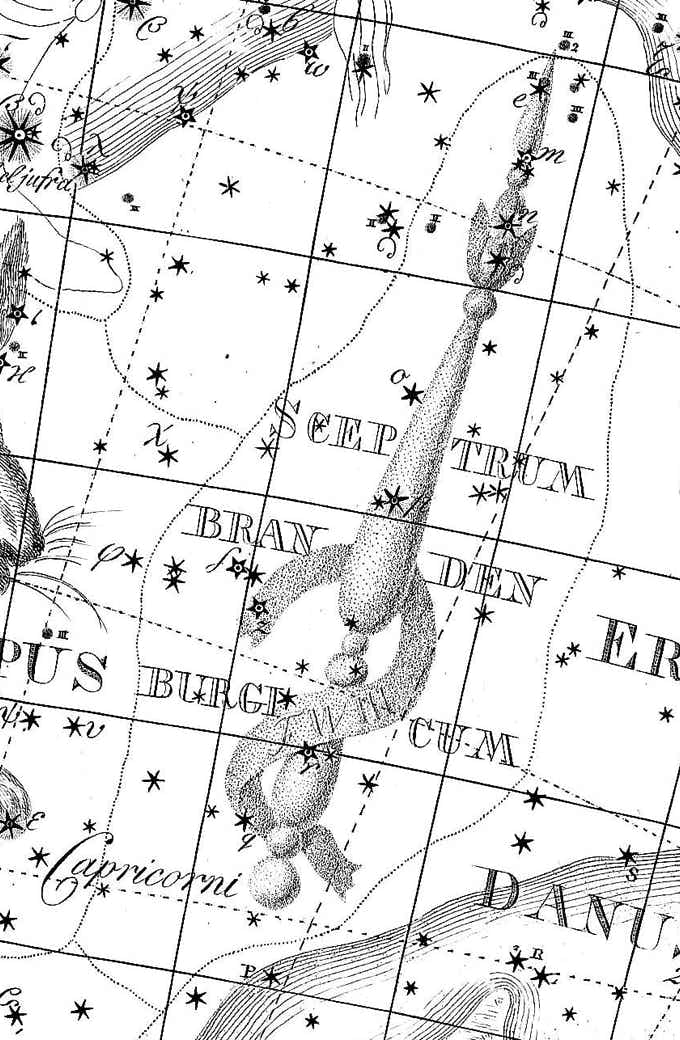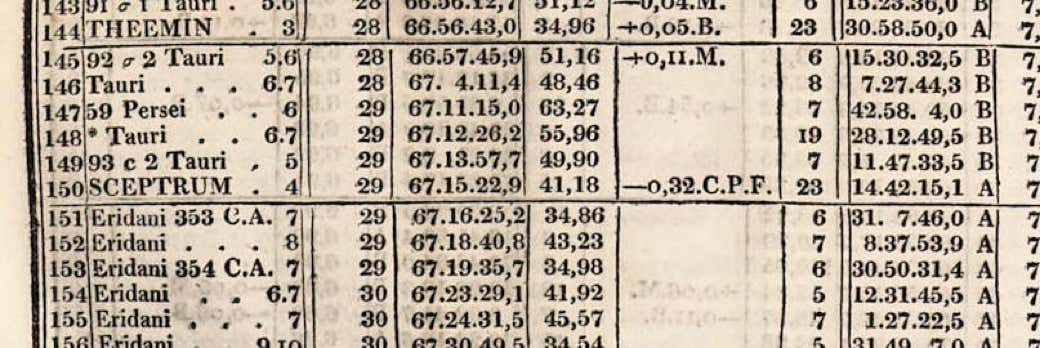
The German astronomer Gottfried Kirch (1639–1710) introduced this constellation in 1688 to honour the Brandenburg province of Prussia, or more likely its ruler Frederick III who had become Duke of Prussia that same year. Sceptrum Brandenburgicum lay near the foot of Orion in a large bend in the river Eridanus. In its initial configuration it consisted of a simple row of five stars of 4th to 6th magnitudes aligned nearly north–south, forming a ceremonial sceptre.
It first appeared on a chart published by Kirch in the scientific journal Acta Eruditorum in 1688, but was ignored for nearly a century until Johann Bode, a fellow German, revived it in 1782 in his popular-level star atlas called Vorstellung der Gestirne. In that atlas Bode called it Der Brandenburgische Scepter; later, on his Uranographia atlas of 1801, he adopted Kirch’s original Latin name for it, Sceptrum Brandenburgicum (see chart below) and added more stars.
Even Bode’s endorsement, though, could not prevent the eventual extinction of this overtly political creation. Its stars are now part of Eridanus, but there is an echo of its former existence in the name of the star 53 Eridani: this is still known as Sceptrum, a name first given to it by the Italian astronomer Giuseppe Piazzi in his Palermo Catalogue of 1814 and officially endorsed by the IAU in 2017. At magnitude 3.9 it was the brightest member of the former constellation, labelled D on Kirch’s original diagram. The other four stars are now known as 46 Eridani, 47 Eridani, HR 1483, and 54 Eridani.
Sceptrum Brandenburgicum on Chart XVIII of Johann Bode’s Uranographia star atlas of 1801. The initials ‘FW III’ on the ribbon around the lower part of the sceptre refer to Friedrich Wilhelm III, who had become King of Prussia in 1797. The constellation’s brightest star, near the middle of the shaft, was of magnitude 3.9. This star is now known as 53 Eridani and bears the popular name Sceptrum.
© Ian Ridpath. All rights reserved
The name Sceptrum was first given to the star 53 Eridani by Giuseppe Piazzi in his Palermo Catalogue of 1814.




